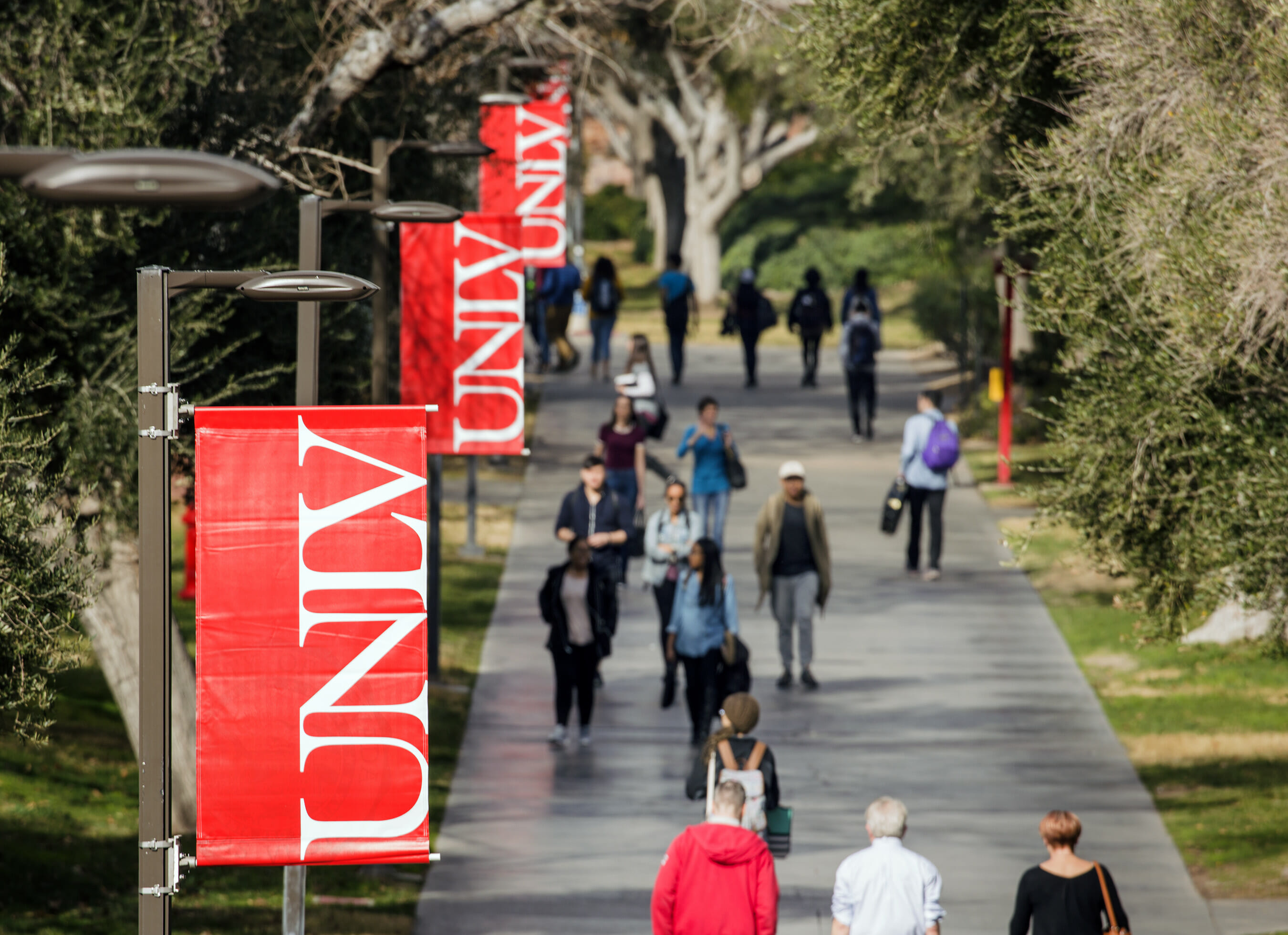UNLV engineering building atop list of proposed major public works budget cuts

More than a dozen construction and public works projects, including a $20 million advanced engineering building at UNLV, would be scaled back or canceled under Gov. Steve Sisolak’s plan to plug the massive $1.2 billion gap in the state budget.
Although the budget proposal would cut more than $72.6 million from the Capital Improvement Projects budget, the worst of the cuts in the budget account for construction, repair and maintenance of state-owned property being avoided thanks to expanded use of unused general bond dollars.
Ward Patrick, head of the state public works division, told lawmakers in the state Senate late Wednesday that the proposed budget cuts include about $23 million in reduced-scope projects, $28 million in cancelled projects and the rest through switching out appropriated state dollars with unspent general bond dollars. Details of the cuts are laid out in SB1, which was introduced in the Senate on Wednesday.
The Capital Improvement Projects budget operates differently from most other state budgets; the budget is authorized for four years (rather than two), meaning the top-line $870 million public works budget includes 192 projects approved in the 2017 and 2019 Legislature. Public works projects can also use bonds to help fund construction projects.
It’s one of four main budget areas — along with health care, K-12 education and the university system — that lawmakers have highlighted for review during the first two days of the special session.
The biggest casualty of the suggested budget cuts is the planned UNLV Advanced Engineering Studies building, which lawmakers had allocated $20 million toward at the tail end of the 2019 Legislature. The building, which Patrick said was nearly ready to put out to bid prior to project cancellation, would have brought the university’s nearly 3,000 engineering students currently spread around 9 different buildings into one space.
Patrick said a design for the building had already been completed, and that if funding was allocated “sooner rather than later” that the division would not need to revisit design plans to comply with updated construction codes.
Democratic Sen. Chris Brooks said he was dismayed that UNLV and Southern Nevada projects appeared to be first on the chopping block once budget cuts needed to be made. He said that while he understood the difficult financial position of the state and public works, the state needed to come back and fund the UNLV engineering building after the economy recovers.
“Once again, UNLV is taking the brunt of the budget crisis,” he said. “And so while there is really no choice in this hard time, it is incredibly important that we recognize this, and understand that when there is a recovery, we will be coming back and asking to complete these projects.”
In addition to the engineering building, public works recommended eight additional projects (either bond-funded or general state budget funded) be canceled. These include:
- A replaced surveillance system at the Casa Grande Transitional Housing facility ($1.7 million saved)
- Plumbing Fixture Water Control Renovations at the Southern Desert Correctional Center ($1.4 million saved)
- Renovation of a Collections Storage Building at the state’s Stewart Facility in Carson City ($885,000 saved)
- Installation of a panic alarm system at the Dini-Townsend Psychiatric Hospital in Reno ($810,000 saved)
- Visitor Center renovations and replaced Comfort stations at the Valley of Fire State Park ($714,000 and $629,000 saved, respectively)
- Installation of Recreation Yard fencing at the Southern Nevada Correctional Center and High Desert State prison ($570,000 saved)
- Renovation of a Pavilion at the Northern Nevada Veterans Memorial Cemetery ($153,000 saved)
Patrick said decisions on what projects to cut or scale back were based on a guiding principle of “taking care of what we have” (prioritizing maintenance of existing state property over new construction) as well as an assessment of security needs and essential functions that needed to be funded.
“Without building systems functioning, prisons would be without physical necessities, and key government buildings could be without heat, light, air conditioning and other building system functionalities,” he said.
Other public works construction programs, while not outright canceled, would face lengthy delays. The Grant Sawyer office building in Southern Nevada, opened in the 1990s, was set for a major interior renovation to fix aged heating and air conditioning systems (that may have contributed to a toxic black mold strain sickening state workers in the building).
Under the governor’s proposed budget cuts, the remodel project (initially given $8 million in state funds) would instead reduce its scope of work and replace funding the general obligation bonds. This, Patrick said, would push back any eventual remodel of the building by at least 18 months (assuming legislators could restore funding in the 2023 session), with an expected reopening date of late 2026.
But delaying repairs on the building could cause issues. Patrick said that recently, part of the building’s sewer line near the cafeteria area had failed, requiring public works to repair about 100 feet of steel pipe that may be eroded in other parts of the building. Those types of repairs will remain on the backburner until a major renovation is completed.
“Basically, we're just crossing our fingers and hoping none of this goes bad before we put in the stuff that we're planning to do, so we don't have to do it twice,” Democratic Sen. Mo Denis said.
